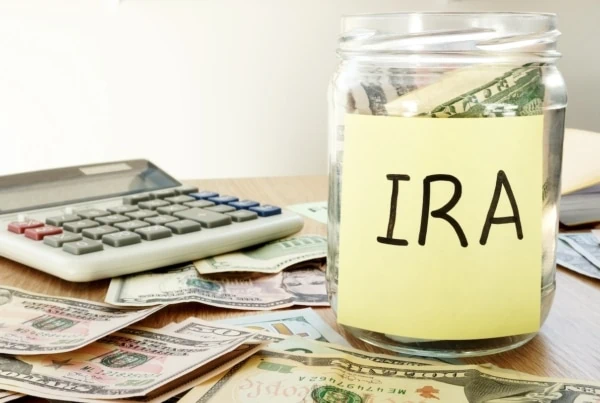If you’re spending time and energy on your retirement savings, that time and energy largely revolves around how to make those savings grow. “How much should I save?” “What accounts should I use to save?” “What should I invest in?”
But one of the most important decisions you’ll ever make, as it pertains to your retirement savings, is how you’ll pull those savings out of your accounts when you finally call it a career.
One of the most popular retirement withdrawal strategies of the past few decades has been the unfussy “4% rule.” It’s one of the most straightforward rules you’ll come across in finance, even as its creator has made a few tweaks to it over the years.
Today, we’re going to dig into the 4% rule. Read on to learn how this retirement withdrawal strategy works, how it has changed over the years, its upsides and downsides, and what alternatives you have.
Disclaimer: This article is meant for educational purposes only and does not constitute individualized investment advice. Act at your own discretion.
How Does the 4% Rule Work?

The 4% rule for retirement withdrawals was created by retired financial advisor William Bengen in 1994. And it goes like this:
Assuming your retirement portfolio consists of between 50% to 75% stocks, and 50% to 25% in bonds and cash, if you …
- Withdraw up to 4% of your savings during your first year of retirement, and
- In each subsequent year, take the previous dollar amount and increase it by the inflation rate (or lower it for deflation)
… your retirement savings will last for at least 30 years.
Importantly, the 4% rule should work across most scenarios. Per MarketWatch, Bengen’s research was “based on someone who retired at the worst moment he could find in modern times: October 1968, just as the stock market peaked, and runaway inflation was beginning.”
Do you want to get serious about saving and planning for retirement? Sign up for Retire With Riley, Young and the Invested’s free retirement planning newsletter.
4% Rule Example

Here’s an example of how the 4% rule would play out for a person with $800,000 in total retirement savings.
- First year of retirement: You would withdraw 4% of your savings, so, $32,000.
- Inflation at the end of this year comes to 2.5%.
- Second year of retirement: You would withdraw $32,000 plus the prior year’s rate of inflation (2.5%). That’s $32,000 x 0.025 = $800. So, you would withdraw $32,800 ($32,000 + $800).
- Inflation at the end of this year comes to 3%.
- Third year of retirement: You would withdraw $32,800 plus the prior year’s rate of inflation (3.0%). That’s $32,800 x 0.03 = $984. So, you would withdraw $33,784 ($32,800 + $984).
This process would continue throughout the rest of your retirement.
Pros + Cons of the 4% Rule

As mentioned before, the 4% rule effectively ensures you won’t run out of retirement income for 30 years—if you retire at 65, that means you’ll be taken care of through age 95, which is well past the expected lifespan of most people.
It also accounts for inflation, which is a factor that some retirees forget about. Rather than just “winging it” in terms of how much you withdraw each year as a retiree, this strategy factors in a hard cost-of-living modification that can increase the chances your retirement savings last.
And lastly, as the example above shows, it’s very simple to implement.
But the 4% rule isn’t foolproof.
Its biggest issue is that while the 4% rule is designed to ensure your retirement savings last in retirement, it doesn’t necessarily ensure a level of withdrawal that will be enough to cover your retirement expenses.
It also assumes you’ll be retired for no more than 30 years—if you live longer than 30 years after you retire, you might outlive your savings.
Finally, the 4% rule doesn’t directly factor in your taxes. Any money you withdraw from a tax-deferred retirement account, such as a traditional 401(k) or individual retirement account (IRA), will be subject to income taxes. Any money you withdraw from a tax-exempt Roth account generally won’t be taxed. And while you won’t be taxed on withdrawals from a traditional brokerage account, you’ll face tax consequences every time you, say, sell a position for a capital gain or loss, or collect a dividend or interest-income payment.
Add to that the fact that individual tax rates vary substantially, and you have a wide range of scenarios that the 4% rule (nor just about any other rule, for that matter) simply can’t account for.
Related: How Is Your Retirement Income Taxed?
What If I Retire Early or Late?

Do you plan to retire early? Depending on your circumstances, there could be a greater chance that you’ll make it more than 30 years into your retirement—and if so, the 4% rule might not be able to ensure your savings will last.
Instead, you might need to start with a lower withdrawal percentage, or use another withdrawal strategy altogether.
You don’t want to underestimate your potential longevity. Average life expectancies include people who die in childhood and early adulthood, so they aren’t necessarily the best estimate for how long you’ll live. For a more accurate estimate, take a look at the Period Life Table, which was developed by actuaries from the Social Security Administration.
That said, if you do retire late, and you expect to have a shorter retirement time frame, the 4% rule should easily cover you. In fact, someone who expects to be retired for a considerably shorter time—say, 20 years—might be able to start their first year of retirement at a higher rate than 4%.
Related: 11 Retirement Planning Mistakes to Avoid
Does the 4% Rule Still Work?

Some experts believe the 4% rule is outdated, including the creator himself!
Several years ago, Bengen upgraded the maximum safe withdrawal rate to 4.5%. He also slightly narrowed the account guidance, saying it applied to tax-advantaged accounts (though he made no distinction between tax-deferred and tax-exempt, so there’s still a high level of tax ambiguity).
And this year, he tweaked the rule again, this time upping the safe first-year withdrawal rate to a maximum of 4.7%. Alongside this change, he also added a more specific asset assumption:
- 55% stocks, split evenly among U.S. large caps, U.S. mid-caps, U.S. small caps, U.S. microcaps, and international stocks)
- 45% bonds, made up of a 40% overall portfolio allocation to intermediate-term U.S. government bonds, and a 5% allocation to U.S. Treasury bills (effectively “cash”)
Interestingly, Morningstar has gone in the other direction. It previously supported the idea of 4% as a safe starting rate. But at the end of 2024, it adjusted its maximum withdrawal number to 3.7% and estimated a 90% probability that a retiree would have funds remaining after 30 years of withdrawals.
However, Morningstar also notes that spending can change throughout retirement, retirees often decrease their inflation-adjusted spending over time, and “incorporating actual spending patterns over retirees’ lifecycles leads to a safe starting withdrawal percentage of 4.8%, assuming a 30-year horizon and 90% probability of success.”
4% Rule: One Variant of a Popular Strategy

The 4% rule falls under the umbrella of a broader retirement withdrawal strategy: the dollar-plus-inflation withdrawal strategy.
With dollar-plus-inflation, you withdraw a predetermined percentage of your retirement savings in the first year, then in each subsequent year, you take out an amount that’s either been adjusted upward for inflation or adjusted downward for deflation.
In other words: The 4% rule is just the dollar-plus-inflation withdrawal strategy with a starting point of 4%.
Related: Plan for These 7 Hidden Retirement Costs
What Are Other Common Withdrawal Strategies?

Dollar-plus-inflation is just one of several popular retirement methods. You can check out our analysis of retirement withdrawal strategies to learn more about it, as well as three other popular strategies:
- Dynamic percentage-of-portfolio strategy: You withdraw a set percentage in your first year, just like the 4% rule. However, instead of adjusting for inflation, you make adjustments based on market performance. When the market does well, you withdraw more; when the market declines, so too do your withdrawals.
- Fixed-percentage-of-portfolio strategy: You withdraw a set percentage of your retirement savings in your first year, but then you stick with that same percentage throughout the remainder of your retirement.
- Fixed-dollar withdrawal strategy: Rather than a percentage of your savings, the fixed-dollar withdrawal strategy has you withdraw a fixed dollar amount in your first year of retirement. You withdraw the same amount in subsequent years, regardless of inflation and market conditions.
One of these strategies, or a variation of one of these strategies, might work for you. But the ideal strategy might also not even be on this list.
The best way to find out? Discuss your unique situation with a financial advisor who is well-versed in helping people understand their financial big picture.
Want to talk more about your financial goals or concerns? Our services include comprehensive financial planning, investment management, estate planning, taxes, and more! Schedule a call with Riley to discuss what you need, and what we can do for you.
How Can I Save More for Retirement?

Few things are certain in this world, but I can safely say the 4% rule probably won’t work for you if you barely have any retirement savings to start with.
If you haven’t focused on saving, and you want to start throwing more money toward your retirement, I highly suggest you check out my guide on maxing out your 401(k) and other retirement accounts. Here’s a very quick summary:
- Contribute enough to your 401(k) to earn your employer match. For instance, if your employer offers to match up to 3% of your contributions, contribute at least 3% of your salary.
- Max out a health savings account (HSA). If you have access to an HSA and don’t already use it for annual health spending, you can enjoy its “triple tax advantage” for investors.
- Max out your IRAs. If you have a traditional IRA, you can contribute money on a pretax basis, and the money can grow tax-free until you withdraw it in retirement. If you have a Roth IRA, you’ll contribute with money that has already been taxed, but that money will grow tax-free in the account, and you won’t have to pay taxes upon withdrawal in retirement.
- Max out your 401(k). Like IRAs, your 401(k) will either be traditional (tax-deferred) or Roth (tax-exempt). Either way, you’re still getting a leg up on the IRS.
- Save with taxable brokerage accounts. Yes, traditional brokerage accounts have the least favorable tax consequences, but if you max out your contributions to all other tax-advantaged accounts, this is your best remaining option.









